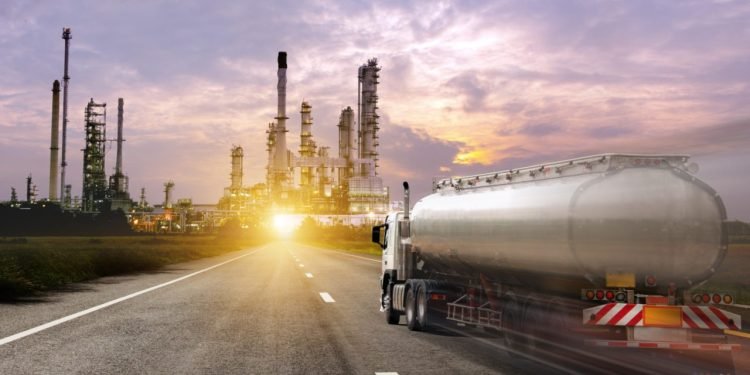By Eva Richardson | The Logistic News
April 9, 2025
As chemical production ramps up across industrial sectors, the logistics systems supporting its movement are transforming at an equally rapid pace. The global chemical logistics market is projected to grow from USD 297.07 billion in 2025 to USD 423.90 billion by 2032, according to recent market research. This forecast reflects a robust compound annual growth rate (CAGR) of 5%, underscoring the sector’s growing strategic importance in the global supply chain.
Why Chemical Logistics Is Booming
The chemical industry is among the most regulation-intensive and risk-sensitive sectors. From raw material procurement to distribution of hazardous materials, chemical logistics requires precision, compliance, and specialized handling. Rising demand for fertilizers, petrochemicals, and specialty chemicals is fueling market growth, alongside tightening safety and environmental regulations.
“Logistics is no longer just a support function—it’s a competitive differentiator for chemical producers,” said Elena Hoffmann, a logistics consultant specializing in hazardous goods.
Asia-Pacific Leads the Charge
In 2024, Asia-Pacific accounted for 40.9% of global revenue, a figure expected to rise as China, India, and Southeast Asia expand their industrial output and trade. Investment in transportation infrastructure, free trade agreements, and domestic production incentives are helping the region dominate chemical exports and imports.
Meanwhile, North America remains a strong player, with the U.S. chemical logistics market forecast to grow from $85.6 billion in 2024 to $118.3 billion by 2033, supported by resilient manufacturing and advanced logistics infrastructure.
Technology Is Transforming the Sector
Chemical logistics providers are adopting cutting-edge solutions to manage complex, high-risk supply chains. IoT sensors now monitor temperature, vibration, and chemical exposure in real time. AI and machine learning algorithms support route optimization and predictive maintenance, while blockchain ensures traceability and compliance documentation across multiple jurisdictions.
“Visibility and real-time data are no longer optional—they’re essential for ensuring safety and optimizing margins,” added Hoffmann.
Sustainability: A Growing Priority
As environmental pressure mounts, chemical logistics is becoming greener. Companies are investing in electric fleet conversions, smart route planning to reduce emissions, and circular packaging solutions. These efforts not only reduce carbon footprints but also align with the ESG goals of chemical producers and their stakeholders.
Challenges on the Road
Despite its promise, the chemical logistics sector faces ongoing hurdles:
- High capital expenditure for infrastructure and technology upgrades
- Complex cross-border regulatory requirements
- Limited availability of skilled personnel to manage hazardous goods
However, these challenges also represent opportunities for innovation, especially for logistics providers offering integrated, end-to-end chemical transport solutions.
Conclusion: From Compliance to Competitive Advantage
As global demand for chemicals continues to climb, the logistics systems that support their safe and efficient movement are evolving fast. In this high-stakes industry, logistics providers that blend compliance with innovation and sustainability will not only keep pace—but lead.
For more global supply chain intelligence and sector-specific insights, follow Eva Richardson and The Logistic News on Google News and LinkedIn.























